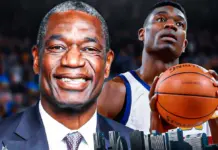NCAA Settlement: Recently, a federal judge gave approval to a $2.8 billion settlement, affecting college athletics in a major way. As a result of the case brought by Grant House against the NCAA, this deal could change the traditional NCAA rules on amateurism. As a result of the settlement, athletes can now get money from licensing deals by using their own name, image, and likeness (NIL). It will have a significant effect on how athletes are paid as well as on the operation of the entire industry.
The Settlement and What Happened Right After
The resolution they agreed on is very significant. In the first year, schools may distribute up to $20.5 million to their athletes. It is equivalent to 22% of the money earned by the school through its TV deals, fans’ ticket purchases, and sponsorships. Some of that economic growth in college sports can be attributed to the College Football Playoff. Those who were not allowed to benefit from NIL payments from 2016 to 2024 may receive up to $2.7 billion in damages. The changes will significantly impact football and basketball players, who are the primary contributors to the sport’s revenue.
Also read: Malia Ann: Why Malia Obama Changed Her Name for Her Film Career
Improving the Way Colleges Manage Their Sports Activities
Throughout most of their history, the main idea in college sports was that athletes were amateurs and did not gain direct rewards from the colleges they attended for their achievements. As revenue in college sports continues to grow, people are increasingly showing interest in the model. Several people have said that while the NCAA made money using the talents of athletes, it didn’t fairly compensate them. The new approach ensures that college athletes can better see how their effort helps earn money, which should raise the professional level of college sports.
The NCAA Settlement also addresses the fact that small schools have less ability to recruit than the high-profile programs. Higher budgets from extra funds in financial agreements can help elite programs sign the best coaches and players, leaving other teams far behind in football and basketball.
The Future of NIL Agreements and Contracting with Third Parties
Since 2021, athletes have had the opportunity to earn money from NIL agreements with third parties. The new terms permit schools to pay their athletes, but they still need the involvement of third parties. Companies and people working with athletes can still make agreements, but they will now be supervised carefully. These transactions will be overseen by a new authority made up of the conferences, who want to make sure athletes are valued appropriately.
This development signals a major shift in the recruiting process, as schools now have a more direct financial incentive to secure top athletes. Top quarterbacks, for example, are reportedly earning around $2 million annually through NIL deals, which represents a substantial portion of a school’s NIL budget for all athletes.
Also read: IOS 26 Beta Exciting Features: Design, Compatibility, and How to
The Impact on College Athletes and Future Challenges
The NCAA Settlement also introduces roster limits, which will reduce the number of athletes on teams, although all players will be eligible for full scholarships. This change could have a significant impact on athletes in less-revenue-generating sports like Olympic disciplines, where funding is typically tied to football and basketball revenues. There are concerns that this shift could hurt the talent pipeline for U.S. Olympic teams, as many athletes come from these non-revenue sports.
Moreover, the NCAA Settlement does not resolve all potential issues. Litigation surrounding college athlete compensation is far from over, with ongoing debates about whether athletes should be considered employees. The new enforcement body, which replaces the NCAA in many regulatory functions, is expected to face legal challenges. There is also the question of collective bargaining for athletes, an idea that continues to gain traction among some factions within college sports.








